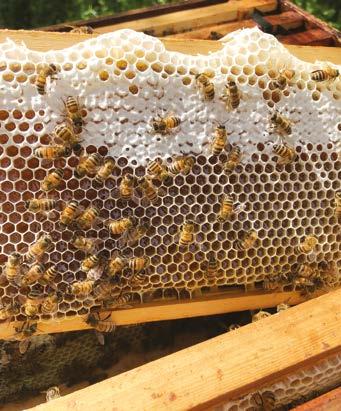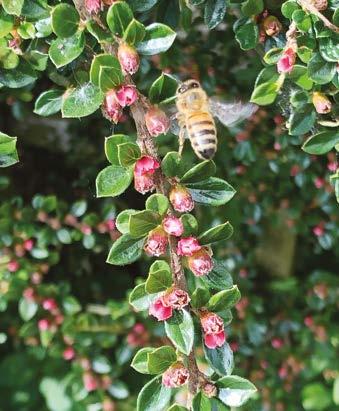
5 minute read
CLUB NEWS
A farewell to John Sanford from the WVCC
The smiling and courteous presence of John will be keenly missed by all members of the WVCC. Although John was involved in many aspects of village life and had a great many interests, his love of cricket was surely one that meant a great deal to him, and he so enjoyed passing on his enthusiasm for the game to his children and grandchildren.
Advertisement
When the WVCC was established a few years ago, John was always a valuable source of knowledge and information whenever we, as the new boys, would seek his advice. One of our committee commented that John was a great listener; he was always interested in what you had to say and, with an understanding smile, would have something helpful, supportive and wise to impart. He was a font of sound advice and amusing anecdotes – accompanied by his trademark chortle!
From the very start, John and Ruth were keen to support the WVCC in any way they could, always there offering encouragement from the boundary at the home matches. When we introduced the WVCC patrons they were among the very first to pledge their assistance.
We feel we were so fortunate to have shared such a memorable evening with Ruth and John as he celebrated his 85th birthday and sat relaxing in the warmth of the evening sun, listening to the evocative and timeless sound of leather on willow. John spent the evening willing our team on as we edged an exciting and engaging match, sharing his congratulations with players and fellow supporters as the shadows lengthened over the playing field.
Goodbye John from all of us, and thank you, it has been a real pleasure to have known you and shared time with you.
WVCC
Chetnole and Leigh Garden Club
17 May was an auspicious day, not just because the Chetnole Inn could serve clients inside, but a Zoom meeting, a first for the Chetnole and Leigh Garden Club. Michele Aldhouse co-hosted the session using the technology that has kept many of us in communication with family and friends during the pandemic.
Our guest speaker was Marion Dale, a garden designer based in Tintinhull. A change of career led Marion to take the opportunity to retrain at Larkham Horticultural College and to founding Summerdale Garden Design which she runs from home. She is also involved in the team which helps to manage the gardens at Barrington Court. Using beautiful photographs, diagrams and simple tricks she outlined the need to consider one’s garden soil type, acidity, light levels, hard landscaping and the client’s preferred choice of colours and plant species. With skill and humour, she guided us through the design process and showed in a practical manner how to achieve one’s dream garden. A short Q&A session at the end resolved a few of the concerns some of our members had, in particular to the poisonous nature of the castor oil plant. Many thanks to Joan for finding Marion as a speaker and looking forward to a time when we can meet up in person, restrictions permitting.
The Garden club usually meets on the first Monday of the month at 7.30pm in Chetnole Village Hall, there is usually an expert guest speaker and refreshments.
Jim Aldhouse
The sight of fluffy yellow hind legs disappearing into the beehive in late February or early March fills the watcher with delight. It means the hive has come through the winter and it’s likely the queen is beginning to lay. The pollen in the hairy sacks on the bees’ legs provide the vitamins the young larvae need to grow strong. Long live snowdrops, crocus, hazel catkins and pussy willow, to mention a few sources.
The beekeeper must ensure there is enough food to keep the brood nest at 32/35 degrees. A small peek under the roof will tell you. If you see a host of restless bees about to emerge, they have finished all their stores and need a fat wad of fondant to give them the carbohydrates they need. Spring cleaning must wait for warmer weather when dandelions are flowering; then the beekeeper can go through the bees, give them a clean hive, check the queen in each is laying well and that there is enough honey and pollen, should the weather take a dive.

And it did! Cold and dry, April offered few harvesting opportunities. Bumblebees were slightly better off as they can fly in much colder temperatures, with their furry coats and mountain beginnings. May was equally inhospitably wet. However, checking the hives during a weather break I found the queens had been laying happily, the numbers of bees had risen hugely and stores were dwindling; frustrated bees were stingingly hostile. Sugar syrup was required on one hive.
Ten days of warm sunshine with late apple, cotoneaster, field maple and other trees flowering, and the hives were bursting with bees and honey. But
swarms threatened. Swift action was needed to ‘split’ the hive in an artificial swarm. First find the queen (hopefully coloured on her thorax), put her in the home hive with all the flying bees and move all the brood, which will have a queen cell waiting to hatch, to a different area. Then cross fingers for more sunny days so the hatched queen can fly to a drone mating area.
Honey can be harvested when the cells have been capped with wax. The aroma of the honey when spinning out the supers is heady, sweet and sometimes almost medicinal. But delicious. Beekeeping and gardening –never a dull moment.


Anna Awdry
Wriggle Valley Women’s Group
The Wriggle Valley Women’s Group meeting will still go ahead on 20 July, at Rimpton Cottage at 6.30pm, and I am looking forward to seeing everyone here.









